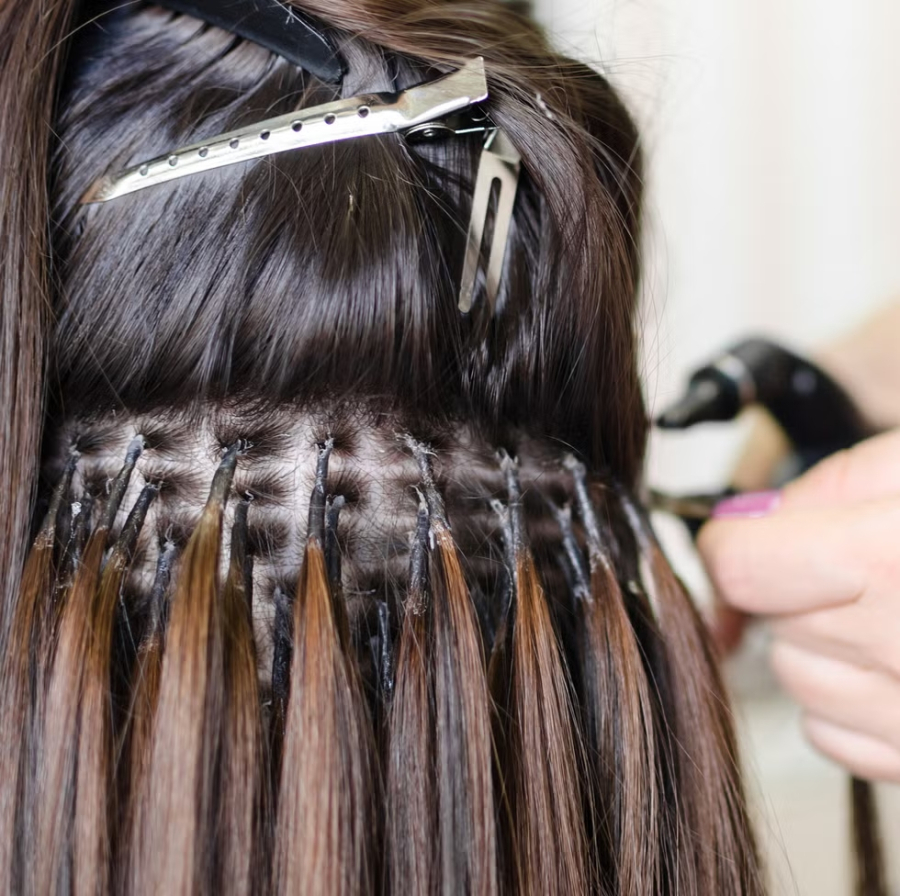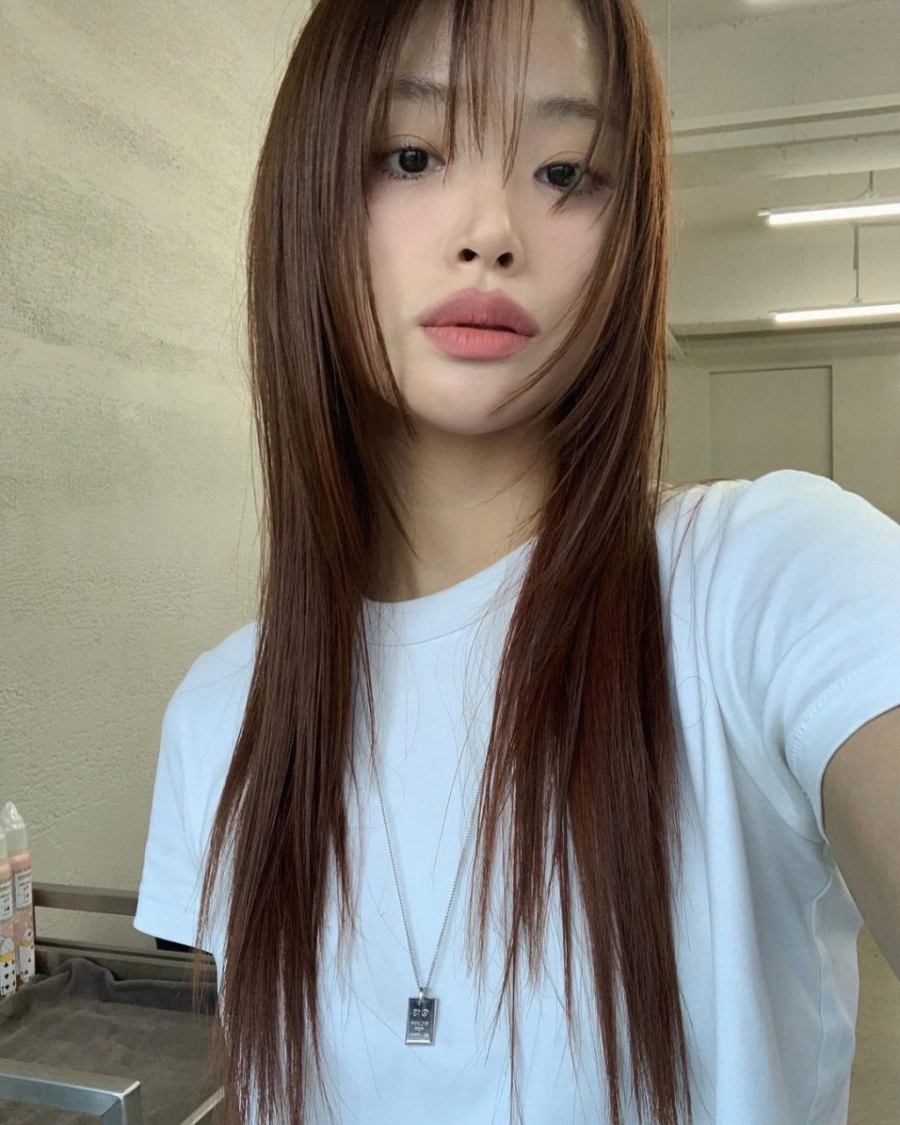Hair extensions are a method of adding synthetic hair strands to natural hair using adhesives, threads, elastics, and beeswax to enhance length and volume. This popular beauty treatment is favored by women to address thin hair issues.
Basic Hair Extension Techniques
Foil Technique
This method involves threading the synthetic and natural hair through a foil tube and clamping it with a metal binder. It is a quick process that causes minimal damage to natural hair and allows for easy removal. However, the binder may become visible during styling, and this technique is not suitable for thin or weak hair due to the tension it creates.

A quick method that causes minimal damage to natural hair.
Glue-in Extensions
Glue-in extensions involve attaching synthetic hair strands to natural hair using specialized glue. This technique is faster than others and provides a stable bond that lasts longer. However, the process is complex and requires a skilled stylist. Additionally, the chemicals in the glue may irritate sensitive scalps.
Wax Extensions
This method does not damage natural hair. Special wax is melted and used to attach the synthetic hair to the natural hair. The wax hardens as it cools, creating a secure yet flexible bond. However, chemical removal is necessary to break down the wax, which can be damaging to weak hair.

A gentle method that doesn’t damage natural hair.
Fiberglass
Fiberglass is a type of synthetic fiber that is durable, soft, and smooth, resembling natural hair. This thin thread has heat-resistant and elastic properties, creating friction to hold the synthetic hair in place. As it does not use chemicals, it is easy to remove and less damaging to the scalp, but it is more expensive and requires a skilled stylist.
Precautions when Getting Hair Extensions
Before Getting Extensions
Continuous use of hair extensions can weaken hair and lead to increased hair fall due to the tension during the application process. This method can cause severe damage to weak and brittle hair, making recovery after removal more challenging.
Women with thin hair due to medical conditions or those with scalp issues like inflammation, pimples, dandruff, or itching should refrain from getting hair extensions.
Caring for Hair after Extensions
Hygiene is crucial as the bonds can accumulate bacteria, leading to issues like dandruff, inflammation, hair fall, and scalp infections. Use a wide-toothed comb before shampooing. Choose sulfate and paraben-free products to prevent hair dryness. Proper care will maintain the volume and minimize the negative impact of extensions.
Deep conditioning treatments are recommended to improve hair health. Additionally, a diet rich in zinc, iron, vitamin B, and vitamin D will nourish hair from within.
6 Hair “SOS” Tips for Fixing a Bad Cut
“Unleash your creativity and become a master hairstylist, crafting exquisite looks that turn heads and captivate imaginations. With a flair for innovation, you can sculpt and shape hair into works of art, becoming a true artist in the world of hairstyling. Imagine the possibilities as you transform ordinary locks into extraordinary creations, leaving a lasting impression on everyone you style.”































